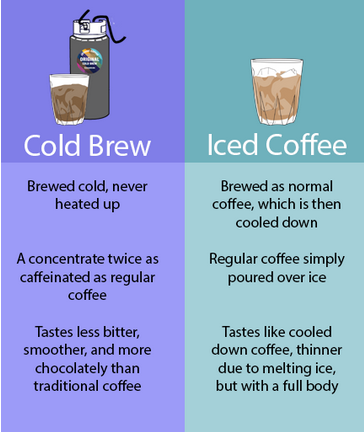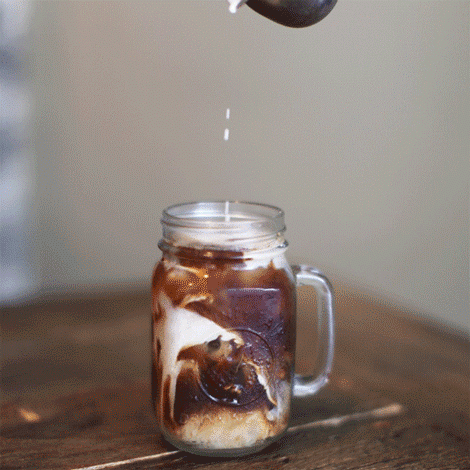As warm weather slowly graces us with her presence, there's one thing on all our caffeinated minds -- cold brew. Ever wonder what make's Joyride's cold brew kegs (think office fraternity) different from your usual run-of-the-mill iced coffee? It's definitely not the same as the expensive iced coffee you started choking on after glancing at its receipt on a hot summer day.
Cold brew coffee is increasingly becoming the standard summer drink in high-end cafes (and, of course, some of the most cutting-edge offices). So what exactly makes this coffee so different from traditional iced coffee we're used to?
In Short:
Let's talk about brewing, baby
Cold Brew:
Cold Brew is created by steeping medium-to-coarse ground coffee in room temperature water for an extended period of time (12+ hours) and then filtering out the grounds for a clean cup without sediment. Unlike regular coffee, cold brew is never exposed to heat. Cold brew uses time, rather than heat to extract the coffee’s sugars, oils and caffeine.
Iced Coffee:
Iced Coffee is created like any regular hot coffee brew method. It is simply hot coffee that has been cooled down so that it can be poured over ice. (Something to think about: this means the iced coffee you are drinking today at a café may very well be the leftover coffee you drank hot yesterday).
The Product
Our Cold Brew
Joyride’s Cold brew is produced using a bean-intensive process, which creates a concentrate far stronger than drip coffee. Although not as strong as an iced espresso, cold brew concentrate packs a punch, with about twice the caffeine per ounce as a regular cup. As a result, many of our customers fondly refer to it as “rocket fuel.”
Because of it’s strength, Joyride suggests that you dilute our cold brew concentrate with milk, water, or ice in a 1:1 ratio, although many a brave soul chose to drink it straight, including many Joyride employees!
Iced Coffee:
Since iced coffee is brewed as regular coffee, the product is exactly the same; only iced coffee must go through a cooling process and also tends to be watered down when served over ice. It really is that simple.
The heat applied to brewing coffee is important: the chemical structure of coffee changes as temperature moves from hot to cold. The process of oxidation is well known in whole bean coffee after roasting, and over time oxygen brings out unpleasant flavors and causes coffee go “stale.” Coffee in liquid form also goes stale, albeit more rapidly. The heat involved with brewing will expedite the oxidation process, which is a significant factor in contributing to poor taste found in regular iced coffees.
Flavor
Cold Brew
Despite high caffeine levels (caffeine is naturally bitter), Joyride’s cold brew carries notes of chocolate, with a smooth, Guinness-like mouthfeel and a lower perceived acidity than traditional iced coffee. Since it is brewed as a concentrate, it will not taste water-y even when you add milk and ice!
I’m melting, I'm melting...
Iced Coffee
Since iced coffee is brewed hot, it can taste bitter, although high temperatures can also extract more coffee solubles than cold brew. While this can lead to a fuller body versus cold brew, the additional extracted solubles include organic materials that can also add to bitterness.
Are you now craving some cold brew? Joyride makes our own cold brew using our roaster’s incredible beans! Learn more about getting kegs (yes, kegs!) or growlers of it for your office from Joyride here.
This blog post was written by Grace Miller.










